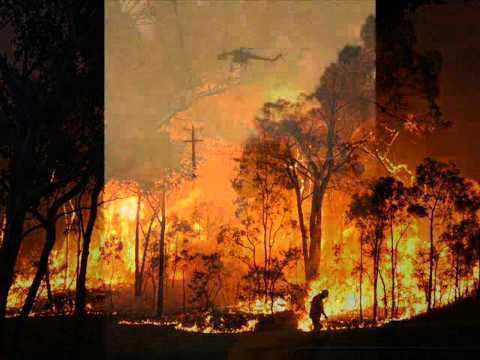Buildingsdestroyed 650 Start date January 13, 1939 Fatalities 71 | Burned area 20,000 km² | |
Similar Ash Wednesday bushfires, Black Sunday bushfires, Black Saturday bushfires, 2003 Canberra bushfires, 2015 Sampson Flat bushf | ||
Black friday bushfires 1939 family story
The Black Friday bushfires of 13 January 1939, in Victoria, Australia, were among the worst natural bushfires (wildfires) in the world. Almost 20,000 km² (4,942,000 acres, 2,000,000 ha) of land was burned, 71 people died, several towns were entirely destroyed and the Royal Commission that resulted from it led to major changes in forest management. Over 1,300 homes and 69 sawmills were burned, and 3,700 buildings were destroyed. It was calculated that three-quarters of the State of Victoria was directly or indirectly affected by the disaster. The Royal Commission noted that "it appeared the whole State was alight on Friday, 13 January 1939".
Contents
- Black friday bushfires 1939 family story
- Conditions
- Effects
- Major fires
- Affected areas
- Central
- East
- West
- Long term consequences
- Comparison with other major Australian bushfires
- References
Conditions

In the days preceding the fires, the state capital, Melbourne, experienced some of its hottest temperatures on record at the time: 43.8 °C (110.8 °F) on 8 January and 44.7 °C (112.5 °F) on 10 January. On 14 January, the day of the fires, temperatures reached 45.6 °C (114.1 °F), which stood as the hottest day officially recorded in Melbourne for the next 70 years. (Unofficial records show temperatures of around 47 °C (117 °F) were reported on the Black Thursday fires of 6 February 1851).
The summer of 1938–39 had been hot and dry, and several fires had broken out. By early January, fires were burning in a number of locations across the state. Then, on Friday 13 January, a strong northerly wind hit the state, causing several of the fires to combine into one massive front.
Effects
The most damage was felt in the mountain and alpine areas in the northeast and around the southwest coast. The Acheron, Tanjil and Thomson Valleys and the Grampians, were also hit. Five townships – Hill End, Narbethong, Nayook West, Noojee (apart from the Hotel), Woods Point – were completely destroyed and not all were rebuilt afterwards. The towns of Omeo, Pomonal, Warrandyte (though this is now a suburb of Melbourne, it was not in 1939) and Yarra Glen were also badly damaged.

Around the same time, mid January, bushfires burnt through the Adelaide Hills, precipitated by the same heatwave. Ash from the fires fell as far away as New Zealand. The fires came under control two days later, when rain fell on the night of Sunday the 15th.
Major fires

There were 5 major fire areas. Smaller fires included; East Gippsland, Mount Macedon, Mallee and the Mornington Peninsula. The major fires, listed roughly in order of size, included;
Affected areas
Towns either damaged or completely destroyed included;
Central
East
West
Long-term consequences
The subsequent Royal Commission, under Judge L.E.B Stretton (known as the Stretton Inquiry), attributed blame for the fires to careless burning, such as for campfires and land clearing. It made a number of recommendations to improve forest management and safety, such as the construction of fire towers and access trails. It also encouraged the creation of a regime of supervised burning, which still exists today.
The fires contributed directly to the passing of the Forests Act, which gave the Forests Commission responsibility for forest fire protection on public land. They were also a key factor in the founding of the Country Fire Authority in 1944.
The environmental effects from the fires continued for many years and some of the burnt dead trees still remain today. Large amounts of animal habitat was destroyed. In affected areas, the soil took decades to recover from the damage of the fires. In some areas, water supplies were contaminated for some years afterwards due to ash and debris washing into catchment areas.
Comparison with other major Australian bushfires
Considered in terms of both loss of property and loss of life, the 1939 fires were one of the worst disasters to have occurred in Australia and certainly the worst bushfire, up to that time. Only the subsequent Ash Wednesday bushfires in 1983 and the Black Saturday bushfires in 2009 have resulted in more deaths. In terms of the total area burnt, the Black Friday fires are the second largest, burning 2 million hectares, with the Black Thursday fires of 1851 having burnt an estimated 5 million hectares.
